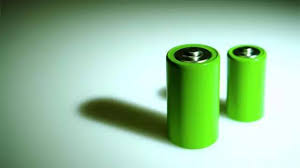Rechargeable Lithium AA Batteries-Introduction And Testing
Jun 16, 2020 Pageview:1186
Lithium-ion batteries are the underlying technology for rechargeable batteries, making them an excellent choice for all types of electronics, from laptops to camcorders. The advantages of lithium-ion batteries are higher efficiency, self-discharge, and higher charge cycles than problems with nicad batteries or NiMH batteries. Before you remove a lithium-ion battery that looks dead, try to bring it back to life first.
Do rechargeable lithium AA batteries exist?
Rechargeable AA and AAA batteries are always longer, cheaper, and reduce waste compared to single-use lithium batteries. After a few hours of research and 120 hours of testing, it is seen most name brands are the same, regardless of whether you are entering a wireless mouse, a kid's toy, or a flashlight.
Rechargeable batteries = reversible reactions
Different chemicals are used in rechargeable batteries, which are separated by completely different reactions. The big difference is that the reactivity of a rechargeable battery can be reversed: when the battery is discharged, the reactions go one way and the battery power; When the battery is charged, the reactions go in the opposite direction, and the battery power is absorbed. These chemical reactions occur hundreds of times in both directions, so a rechargeable battery usually gives you two to three to 10 years of useful life (depending on how often you use it and how well you perform it).
One of the most innovative batteries that can be recharged, Li-ion batteries have received a lot of attention over the past few decades. They are the main mobile energy sources for portable electronic devices that are used exclusively for cell phones and laptop computers. Li-ion batteries are considered the focal point of the personal digital electronic revolution that began more than two decades ago and are almost simultaneously commercialized Li-ion batteries.
Rechargeable batteries go a long way and have more options than ever. Spending a little bit earlier will save you a lot of money in the long run, and you won't have to buy more than a year.
What are the best rechargeable lithium aa batteries?
Demand for Li-ion batteries is increasing, especially with the demand for electric-powered vehicles. Li-ion batteries have significantly evolved compared to other commercial rechargeable batteries in gravimetric and volumetric terms.
Connected basic Li-ion cells produce a Li-ion battery by using parallel (to increase current), range (to increase voltage), or integrated configurations. Multiple battery cells can be combined into one module. Multiple modules can be integrated into one battery pack.
Kentli manufactures the best rechargeable lithium-ion AA batteries currently available. They are rated at 2800mWh and are only 1.5 V li-on AA batteries, making them the best choice for consumer-grade electronics.
Not long ago, disposable alkaline batteries gained undeniable expertise in the AA battery market. Improvements in rechargeable battery technology have dominated the area for the past decade. As we reported in this article, recyclable options for nickel-metal hydride (NiMH) AA batteries, such as the Panasonic Eneloop, have become more expensive.
The 1.5 V lithium-ion battery has recently been made available to consumers. Lithium-ion cells have higher power density, longer cycle life and lower self-discharge rates than NiMH batteries. In other words, they last longer than different types of cells and have a higher voltage.
Kentli's 1.5 V offer is the perfect choice for everyday household needs. The batteries have the same voltage as the new alkaline battery, and the stock battery won't surprise the devices that need it.
2800mWh is functional capacity, which equates to about 1866mAh. In comparison, the Eneloop Pro has a capacity of 2550 mAh. As with most NiMH batteries, the EneloopPro is 1.2V.
Rechargeable Lithium Batteries - Unlike NI-MH, Alkaline and NI-CD batteries, charge up to 1000+ cycles, replace dry batteries and simple rechargeable batteries, and save money!
Lithium batteries are widely used and offer the following benefits:
1.High Energy Density: Lithium-ion batteries provide greater energy density versus other types of rechargeable batteries (Nickel Metal Hydride battery, Nickel-Cadmium battery, Lead Acid battery), which enables cells to become smaller and lighter.
2. High Power:?As the operating voltage of the Lithium-ion battery is higher versus other types of rechargeable batteries, it can support higher output.
3.Long Life:?Rechargeable lithium AA batteries can be used repeatedly by charging. The life of a lithium-ion battery is defined as the number of full charge/discharge cycles. The higher the number of full charge/discharge cycles, the longer the batteries will last.
How Do You Test Rechargeable Lithium AA Batteries?
Lithium-ion rechargeable batteries come in different shapes and sizes. Lithium-ion batteries have become a favorite battery of most electronics, mainly cellular phones and laptop computers. One drawback of rechargeable lithium batteries is their lifespan is two to three years. Over time, lithium-ion batteries lose their ability to charge.
?Remove the lithium-ion battery from the device. In most cases, the battery is attached to the charging device. For example, on cellphones, this is usually in the back panel, which can be accessed by sliding off the board. To access the battery on other devices, you will need to remove some screws to access the battery. You should check the owner of the device you want to test the battery.
?Turn on the power to your voltmeter
?Set the meter to measure volts
?Find the positive and negative terminals of your lithium-ion battery. These are usually at the end of your battery, which slips into the power source first. Terminals are tiny, but they are marked with positive and negative signals.
Lithium-ion batteries have different dispersion rates. In the case of the dynamic electrochemical reaction, the gelled electrolyte Li-ion polymer was found to be faster than the ordinary Li-ion. Most lithium-ion batteries are in use, and with increasing applications, a quick-test method is needed. There have been many attempts, including measuring internal resistance, and the results have been mixed.
Leave Message
Hottest Categories
-
Hottest Industry News
-
Latest Industry News















